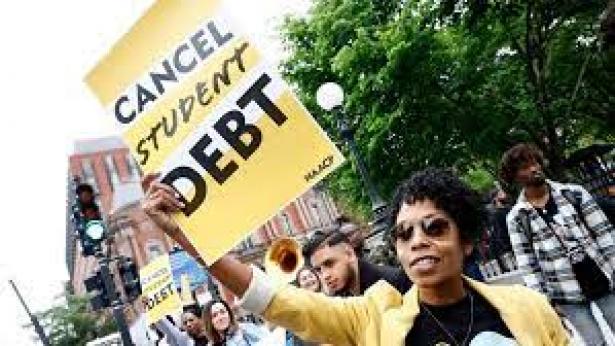President Biden is expected to cancel up to $10,000 in student loan debt per federal borrower earning less than $125,000 annually on Wednesday, holding true to a campaign promise and relieving millions of their student debt burdens.
If the president’s plan moves forward, he could potentially eliminate loan balances for around 15 million people, which accounts for about one-third of all U.S. student loan borrowers. These Americans will see their monthly payments go away and the U.S. will simultaneously lower its $1.7 trillion outstanding student loan balance.
The decision will still leave 30 million borrowers on the hook for the remainder of their balances, some potentially seeing little movement in their monthly payments when the moratorium reaches its expected end.
That’s because data shows the average student borrower owes more than $37,000 to be paid off over 20 years.
However, issuing some debt forgiveness would still have a major impact, especially for student loan delinquencies, which reached close to 10 million in 2020 before the payments were first paused by the Trump administration, Kevin Miller, associate director of higher education at the Bipartisan Policy Center, told Changing America.
“The 15 million with debts under $10,000 who would see complete forgiveness include around 5 million borrowers who were in default or delinquent on payments before 2020, so it would wipe out about half of the approximate 10 million defaults/delinquencies that existed before 2020,” Miller wrote.
Miller explained that borrowers with lower balances have been more likely to default than borrowers with higher balances, in part because many didn’t end up completing a higher education degree. These borrowers end up being unable to repay because many don’t end up with a higher-earning career before becoming entangled in decades-long repayment plans with growing interest.
Although the administration’s plan would mark the largest individual forgiveness effort to date, borrowers whose loans exceed the $10,000 forgiveness threshold could see little impact initially, especially those on income driven repayment plans.
“For borrowers in income-driven repayment, monthly payments depend on income, not amount owed. So many borrowers whose debt is not entirely erased will not see an immediate impact,” experts at the Urban Institute told Changing America.
But lowering the borrowers’ balances by $10,000, even if it fails to reduce monthly payments drastically, could still lead borrowers to pay off their loans earlier than expected.
Though the Biden administration appears poised to issue $10,000 in loan forgiveness, advocates alongside progressive lawmakers have pushed the administration to cancel up to $50,000 per borrower, arguing it would help narrow the racial wealth gap, provide immediate relief to millions during a recession and become a massive consumer-driven stimulus to the economy.


Spread the word